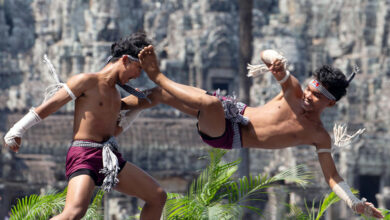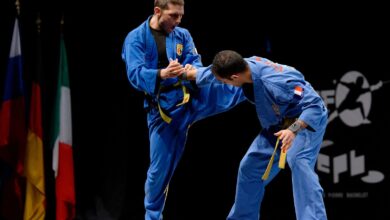Muay Thai: The Art of Eight Limbs

Martial Arts: Muay Thai (มวยไทย), also known as the Art of Eight Limbs, is a traditional Thai martial art and combat sport that has been practiced for centuries. It is known for its powerful strikes using fists, elbows, knees, and shins, making it one of the most effective and dynamic stand-up fighting styles in the world. Muay Thai is deeply embedded in Thai culture and has evolved from battlefield combat techniques into a globally recognized sport.
Origins and Early Development
Muay Thai’s origins can be traced back to ancient Siam (modern-day Thailand) and its need for practical hand-to-hand combat during warfare. It developed as a self-defense system used by warriors and soldiers, particularly during conflicts with neighboring kingdoms such as Burma, Cambodia, and Laos.
Influence from Muay Boran
- Muay Boran (Ancient Boxing) was the predecessor to Muay Thai, focusing on lethal combat techniques.
- It was used in military training and was considered a necessary skill for Thai warriors.
- Over time, different regional styles emerged, such as Muay Chaiya, Muay Korat, Muay Thasao, and Muay Lopburi, each with unique characteristics.
King Naresuan and the Rise of Muay Thai (16th Century)
- During the Ayutthaya Kingdom (1350–1767), Muay Thai became a formalized martial art.
- King Naresuan (1590–1605) encouraged Muay Thai training among soldiers and commoners.
- The art was used in hand-to-hand combat when weapons were lost on the battlefield.
Muay Thai in the 18th and 19th Century
The Legendary Nai Khanom Tom
One of the most famous figures in Muay Thai history is Nai Khanom Tom, a Thai warrior captured by the Burmese during the Burmese–Siamese War. In 1774, he was forced to fight against Burmese champions and defeated them all using Muay Thai, gaining his freedom. His victory is celebrated as Muay Thai Day (March 17th).
Muay Thai Becomes a National Sport
- By the Rattanakosin era (19th century), Muay Thai became a popular form of entertainment.
- Fighters wrapped their hands with hemp rope (Muay Kard Chuek) for protection and increased impact.
- It became a favorite pastime of King Rama V (1868–1910), who helped popularize the sport nationwide.
Modernization and Global Expansion
Transition to Modern Muay Thai (1920s–1930s)
- Muay Thai underwent major rule changes to make it safer and more structured.
- Western-style boxing gloves replaced hemp hand wraps.
- A standard ring and timed rounds were introduced.
- Weight divisions and protective gear were implemented to formalize competitions.
Post-World War II Growth
- Muay Thai expanded beyond Thailand, gaining international recognition.
- Fighters began competing against Western kickboxers, proving the effectiveness of Muay Thai in stand-up combat.
Muay Thai in the 20th and 21st Century
- The establishment of The World Muay Thai Council (WMC) in 1995 helped regulate and promote Muay Thai internationally.
- Muay Thai became a key discipline in Mixed Martial Arts (MMA), influencing elite fighters in the UFC and ONE Championship.
- The International Olympic Committee (IOC) has recognized Muay Thai, with efforts underway to include it in future Olympic Games.
Techniques and Training
Muay Thai is famous for its eight striking weapons:
- Punches (Chok): Similar to Western boxing.
- Elbows (Sok): Used for close-range attacks and cutting strikes.
- Knees (Ti Khao): Devastating knee strikes to the body and head.
- Kicks (Teh): Powerful roundhouse and push kicks.
- Clinch Fighting: Used to control opponents and deliver knee and elbow strikes.
Training in Muay Thai involves intense conditioning, bag work, pad drills, sparring, and traditional rituals like the Wai Kru Ram Muay, a ceremonial dance performed before fights.
Cultural and Spiritual Aspects
- The Mongkon (Headband) and Pra Jiad (Arm Bands) are worn as symbols of respect and protection.
- Traditional Thai music (Sarama) is played during fights.
- Muay Thai is not just a sport but a way of life, teaching discipline, humility, and perseverance.
Muay Thai has evolved from an ancient battlefield martial art to a globally respected combat sport. It remains an integral part of Thai culture and continues to influence modern martial arts worldwide. With its blend of tradition, effectiveness, and athleticism, Muay Thai stands as one of the most revered striking arts in the world today.




One Comment